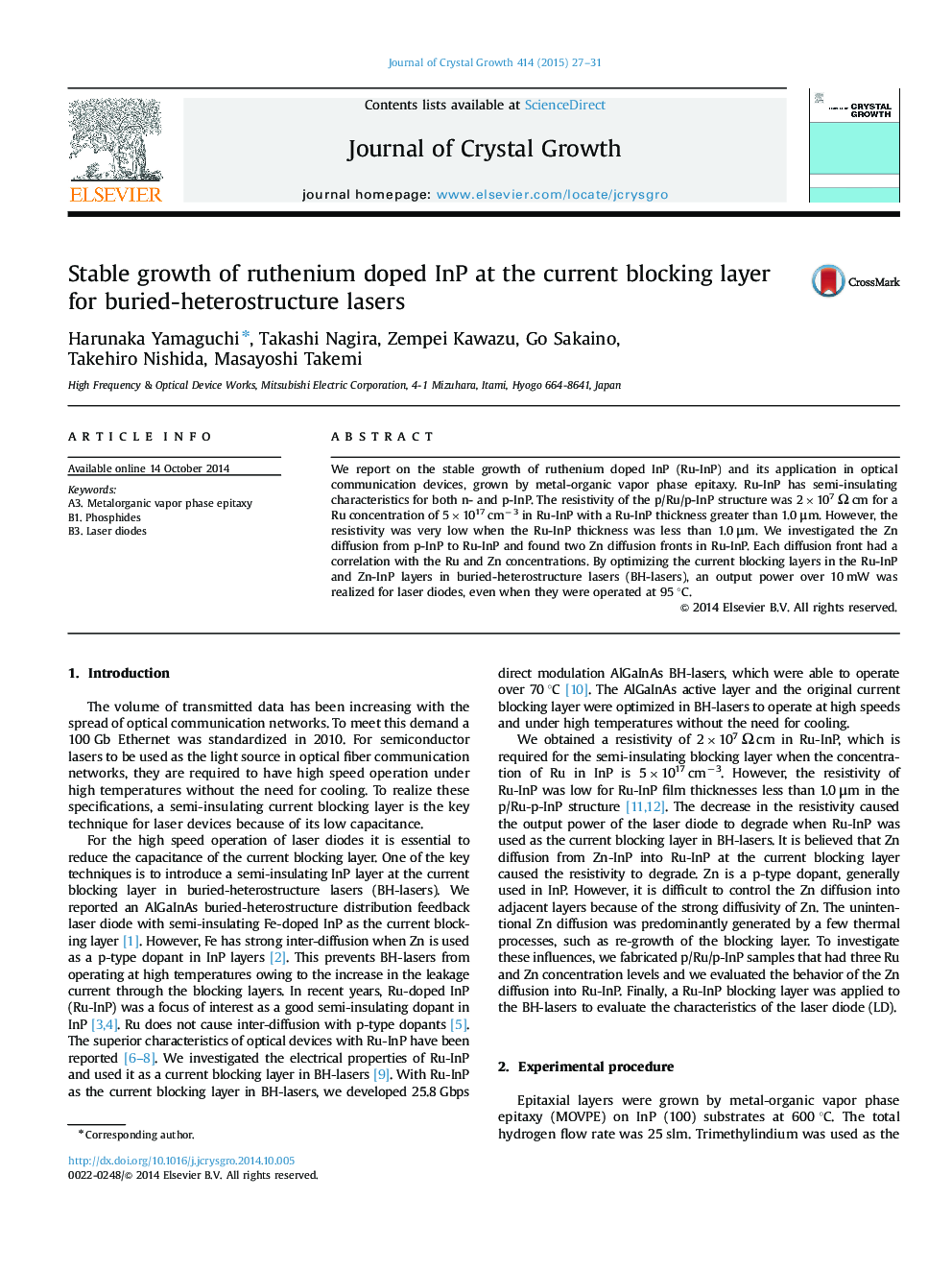| Article ID | Journal | Published Year | Pages | File Type |
|---|---|---|---|---|
| 1790119 | Journal of Crystal Growth | 2015 | 5 Pages |
•The growth method of ruthenium doped InP (Ru-InP).•Semi-insulating characteristics of Ru-InP for both n- and p-InP.•High resistivity of 2×107 Ω cm at the p/Ru/p-InP structure.•The dependence of Zn diffusion length on Ru and Zn concentration.•The application of Ru-InP for optical communication devices.
We report on the stable growth of ruthenium doped InP (Ru-InP) and its application in optical communication devices, grown by metal-organic vapor phase epitaxy. Ru-InP has semi-insulating characteristics for both n- and p-InP. The resistivity of the p/Ru/p-InP structure was 2×107 Ω cm for a Ru concentration of 5×1017 cm−3 in Ru-InP with a Ru-InP thickness greater than 1.0 μm. However, the resistivity was very low when the Ru-InP thickness was less than 1.0 μm. We investigated the Zn diffusion from p-InP to Ru-InP and found two Zn diffusion fronts in Ru-InP. Each diffusion front had a correlation with the Ru and Zn concentrations. By optimizing the current blocking layers in the Ru-InP and Zn-InP layers in buried-heterostructure lasers (BH-lasers), an output power over 10 mW was realized for laser diodes, even when they were operated at 95 °C.
